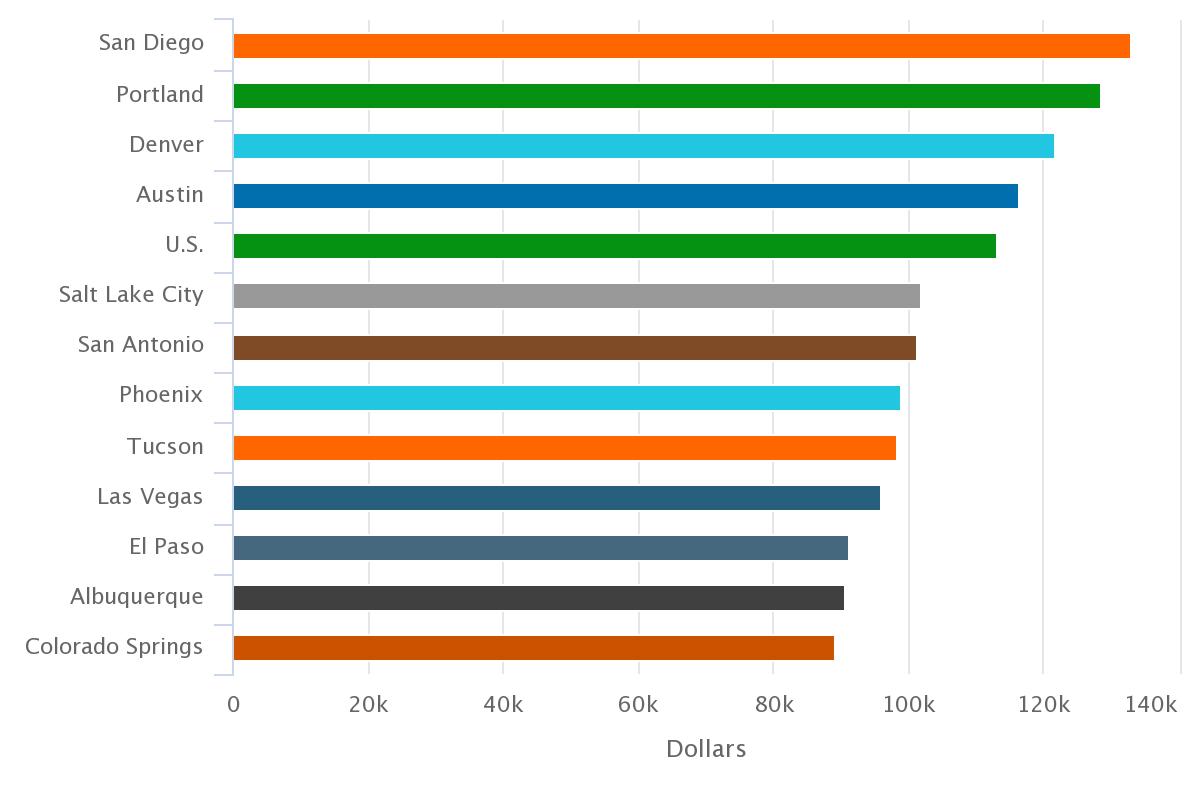Productivity is a key driver of our standard of living. It contributes to rising wages and income, as well as increased leisure time. Measured by output per worker hour, productivity increases when we find new and better ways to produce goods and services. This might be driven by new and better machines and/or software to aid workers or it might be driven by finding new ways to organize and optimize the existing work environment. Either way, we depend on productivity and innovation to make our standard of living rise. This makes the slow growth of U.S. labor productivity since the end of the Great Recession a particular concern.
The Brookings Metropolitan Policy Program has an interesting new article that address U.S. productivity issues from a metropolitan perspective. Brookings uses existing data to provide productivity comparisons for 382 metropolitan statistical areas (MSAs) in the U.S. These data include output per worker in 2015 and growth in output per worker for four time periods (1978-2015, 1978-1995, 1995-2004, and 2004-2015). They find large differences in productivity across metropolitan areas, with the largest 100 areas generating far higher productivity than the remaining 282 smaller areas. Figure 1 shows how the Tucson MSA stacked up against 11 western MSAs in productivity per worker in 2015.
Figure 1: Output per Worker in 2015 for Selected Western MSAs

Tucson ranked eighth out of the 12 western MSAs in 2015 in output per worker, with $98,210. San Diego ranked first, with $132,960, while Colorado Springs ranked last, with $89,130.
How can Tucson move up? One avenue for improvement, according to the article, is education. Productivity depends on the education and skill level of the city’s workers. Better educated workers tend to come up with more innovative ideas, they make better use of advanced capital equipment and software, and find better ways to organize the existing work environment. Improving educational attainment would boost Tucson’s productivity ranking and ultimately the standard of living of its residents. Follow this link to explore Tucson’s educational attainment and performance on patents per worker. Patents are an indicator of local innovation.












